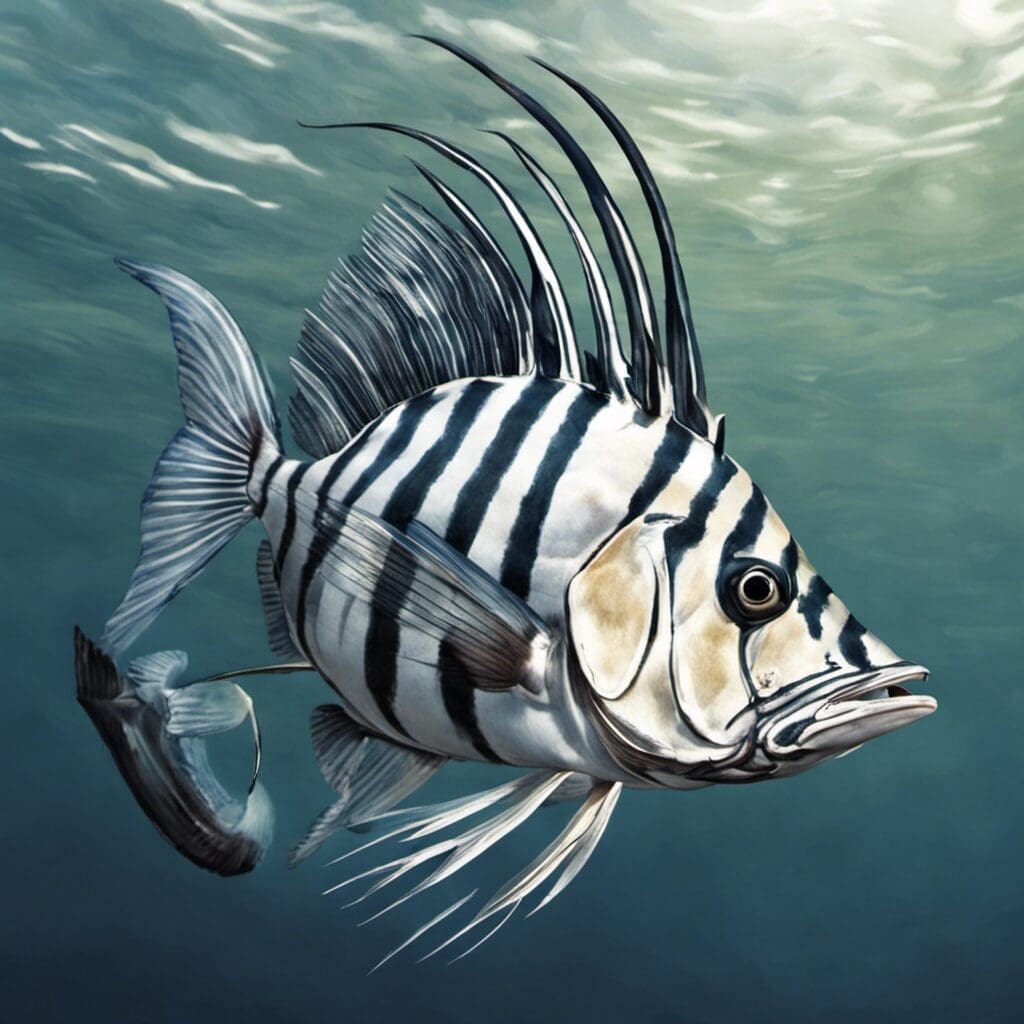Introduction
The roosterfish (Nematistius pectoralis) is a coastal marine fish of the family Nematistiidae, known for its distinct dorsal fins that resemble the comb of a rooster.
Conservation Status
Although there is little detailed information on population trends, the roosterfish is not currently classified as a species of concern, and thus not presently under any particular conservation status. However, efforts like limiting overfishing and promotion of catch and release practices help to preserve the species.
Statistics
| Statistic | Average | Range |
|---|---|---|
| Length | 1.5 m | 1-1.6 m |
| Weight | 20 kg | 2-50 kg |
| Lifespan | Not specified | Not specified |
Distribution
Ranging the Eastern Pacific from Baja, California to Peru, Roosterfish would migrate up and down the coast in relation to the changing seasons and water temperatures.
Habitats
Favoring inshore environments, such as sandy beaches, rocky outcrops, and coral reefs, roosterfish often operate within a shallow depth range. These fish prefer warmer water temperatures and are found more abundantly in areas with water temperatures around 24-30°C.
When and Where to See
Roosterfish can be seen throughout the year, but are more present during warmer months. These fish are usually active during the dawn and dusk feeding periods.
Best Fishing Locations
Roosterfish are a coastal species, found in tropical and subtropical waters off the western coast of Central and South America. Top fishing locations include:
- Golfito, Costa Rica
- Piñas Bay, Panama
- Espinosa Bay, Baja California
- Cabo San Lucas, Mexico
- Zihuatanejo, Mexico
- Manzanillo, Mexico
To find roosterfish when specific locations aren’t known, look for them along sandy beaches, rocky outcrops, jetties, or coral reefs. They often cruise in shallow water and can be seen chasing schools of smaller fish.
How to Catch
Roosterfish put up a strong fight and are enjoyed by sports fishers. They are best caught using live bait fish, predominantly mullet and sardines.
Identification Guide
Roosterfish can be easily identified by its long, spiky dorsal fins. It has a sleek, torpedo-shaped body and a silver-grey color with darker bars or marks running vertically along the body.
Culinary
Although edible, roosterfish is not regularly targeted for food because the meat is considered not as desirable compared to other fish species. However, some recipes include grilling or pan frying with citrus and fresh herbs.
Additional Information
Roosterfish have ambiguous feeding habits. They patrol the coastal areas in search of smaller fish and will also eat crabs and other small sea creatures. Although there are no known natural predators of adult roosterfish, young can fall prey to larger fish species, birds, and marine mammals. The species has little historical or cultural significance, but it is highly valued as a sport fish due to its strength and endurance.
References and Further Reading
For further detailed information about roosterfish, consider these sources:
- FishBase
- Florida Sportsman
Please note: Always handle fish with care and respect all fishing regulations to ensure these species’ survival.

